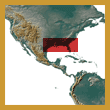DEIROCHELYS RETICULARIA
order Testudines
sottordine Cryptodira
Superfamily Testudinoidea
family Emydidae
Description
This aquatic turtle of the America north characterized from a carapace to cupola with designed a reticulum that to second of the subspecies changes color.

One of particolarit of the this species neck of remarkable dimensions, medium along like the piastrone.
The common name Chicken American turtle (turtle pollo) this perch in past came eaten perch its meats has a good sapore that remembers the meat of pollo.
Three subspecies of this turtle exist:
DEIROCHELYS RETICULARIA RETICULARIA common name Eastern Chicken Turtle
DEIROCHELYS RETICULARIA MIARIA Common name Western Chicken Turtle
DEIROCHELYS RETICULARIA CHRYSEA common name Healthy Chicken Turtle.
SUGGESTED BREEDINGS by MENANDPETS.COM
No breeding to signal
if you want to know like signaling yours, contacts: marketing@inseparabile.it
Habitat
The D. considered an aquatic turtle, its ideal habitat is waters calm like ponds, lagos, pits or channels, but also swamps. With normally large quantit of aquatic plants and the muddy bottom.
observed state that they can inhabit also places where the summer water reduces remarkablly (as an example in the bay of the south Carolina).
In order to escape to the siccit it digs holes in the mud or the underbrush.
If the conditions of its habitat are not good, this turtle pu to migrare until finding an atmosphere better, this makes s that in the barren season a high concentration of animals in some permanent water pools is had.
Habits
Devout theirs attivit land obvious in the months that go from March to you open them like their migrano dry habitat in order to try humid devout areas as an example the bay of Carolina where in the warm season we have one concentration of 40 animals for hectare.
During the attivit land in kind they dig deep holes in periods of large siccit.
The two subspecies that lives devout to north (reticularia and miaria) go in letargo in the winter months on the muddy bottom of the water mirrors where they live, while the Crysea, living in Florida where the inverni they are devout myths, does not go in letargo, but slows down only its attivit in cold the devout days.
FEEDING
This turtle in nearly exclusively carnivorous nature and one great predatrice, state observed that in a day pu to pregive devout fish.
The technique used for the hunting similar to that one of the mata mata turtle, cio "inhales" the prede without warning expanding along neck with the open mouth.
The small very rarely nutrono of aquatic plants, in kind prefer small fish, crustaceans of river, larve of bugs and bugs, solo the food adults nutrono every a lot vegetables.
In the feeding in cattivit we can use the same alimony that we have previously marked, for which latterini, acqardelle, trout, fish cat, gamberi, are the just diet, towards according to year we can insert of the vegetables like lattuga roman or aquatic plants like giacinto of water or the lenticchia of water.
Breeding
Being aquatic turtles they will have to be raised in a acquaterrario with an emerged area of discreet dimensions.
The bathtub would have to be prepared like those of the slider (trachemys, crysemys, graptemys etc), for which heated water to 24, basking area to 28 -30, lamp UVA-B to 5% with fotociclo of 12 hours, external filter in order to guarantee an optimal one qualit of the water, width zone of basking for being able to make to dry the turtle.
REPRODUCTION
The Deirochelys one of the little turtles of the America north that has a winter riproduttivo cycle.
The seasons of the connections are two, one that goes from met February to May, other from August to November.
For the subspecies of Florida, the continuous season from met september to March, sinterrompe only in cold the devout days.
The nests are dig to you in kind in spiagge sunny, observed state that they are to 50 m from the water and in the beam of 40 m not bushes are n trees n this in order to guarantee the maximum solar heat.
The nests can contain from the 5 to 12 eggs (in average 8) for the reticularia and miaria subspecies, from the 2 to the 19 (in madia 9) for the crysea.
The period of incubation of approximately 152 days for the species continental, while it comes down to 78-89 days for the species of Florida.
The sex of the small, like for much Emydidae, depends on the temperature of incubation.
The maturit sexual they soon catch up it around to the 2 - 3 years, but theirs longevit limited around to the 15 - 18 years for the exemplary in cattivit but also less for the wild animals us.
Paul Donates To You
we thank the situated one TARTAPORTAL
http://www.tartaportal.it For the realization of this card.
